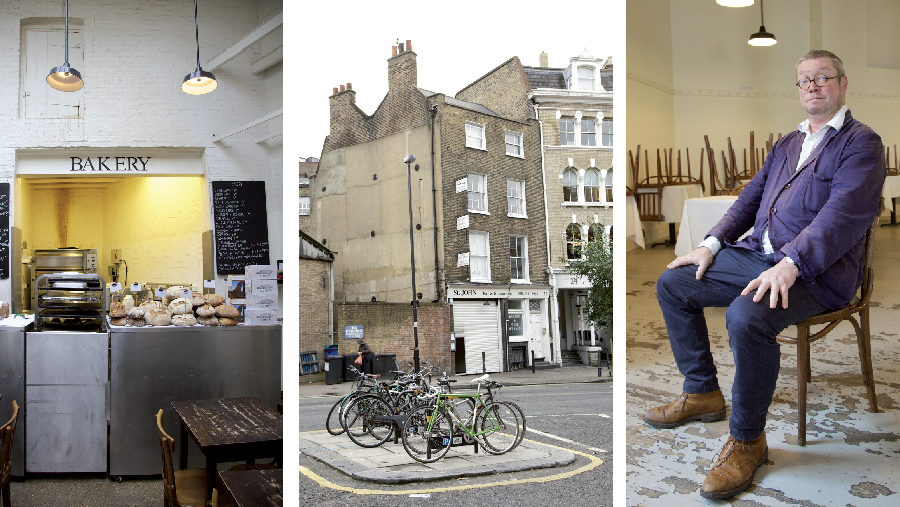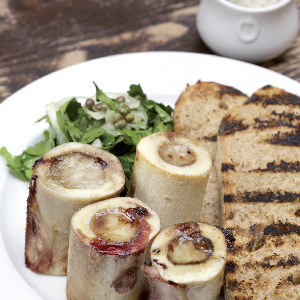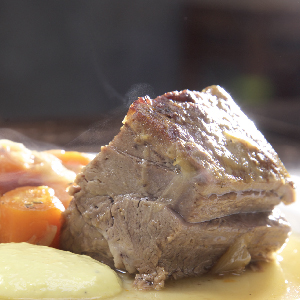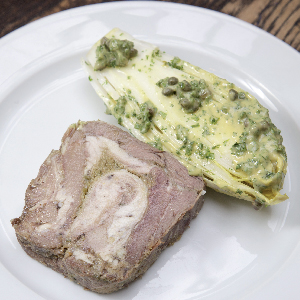The terms Nose to Tail and Bistronomy have never been trendier and have been exploited fully by smart marketing managers. Yet for the pioneer of nose to tail cooking Fergus Henderson twenty years ago, it was little more than the natural matter of course. With hardly any money to spare, he simply painted a dilapidated factory white and used the tables and chairs as his décor instead of table linen and decorations. “In my restaurant, the guests and the cutlery make the music and the simplicity, whilst the building’s character provide the decoration.” Fergus describes his own style of cooking as no-frills; which nevertheless is a style of cooking that has put him up there in the World Top 50. In fact, he caused so much excitement that he has since managed to open subsequent restaurants, a winery and bakery. According to Fergus, it all started with the philosophy of nose to tail. “I was not a chef when I started cooking for other people, so just followed my mother’s example.” This is where Fergus got his philosophy for using the entire animal, right down to even the least attractive of its parts. We have to treat animals with respect, which includes their noses, ears and stomachs. These each have their own amazing flavours, aromas, colours and shapes, and guests who were simply not ready for this kind of gastronomy twenty years ago, are now competing for a table. We asked Fergus for a few thoughts on veal: “I am very fond of marrowbones and they are always on our menu. They always will be. I love the juiciness and how fresh veal looks. You’ll never find a veal tenderloin on the menu here: there are so many other more interesting parts. What could be more beautiful than serving a braised neck of veal for a group of guests? That’s what I call true comfort food….”
Put the marrowbones in a large roasting tin and roast in the oven for 20 minutes at 220°C/430°F, depending on the thickness of the bones. The marrow should detach from the bone but not run out. If it starts to colour too much, cover with aluminium foil. Meanwhile, chop the parsley, mix with the capers and season to taste with a dressing of the ingredients listed here. Place the marrowbones upright on the plate with the slices of toast and the salad. Serve with a small dish of coarse sea salt and a peppermill on the side, so that the guests can spread the marrow on their own toast and season it to taste themselves. The crunchiness of the salt will add an extra dimension to the flavour.
Serves 4
16 pieces of marrow bone (veal, and each about 7 cm in length), 2 chopped shallots, 1 bunch freshlypicked, flat-leaves parsley, 4 dstspn capers, toasted farmhouse bread, freshly-ground pepper, coarse sea salt.
For the dressing
juice of 1 lemon, olive oil, pinch of fleur de sel, freshlyground pepper.
Season the neck of veal with salt and pepper and roast it on all sides in olive oil in a large roasting tin. As soon as the meat starts to caramelise, remove the meat and sweat the carrots (peeled and cut) in the tin with the garlic. Add the chopped herbs and put the meat back in. Deglaze with a good amount of sherry and reduce by half. Add enough bouillon so the meat is covered half way, cover and roast for 90 to 120 minutes at 180°C/355°F. Carve the meat and serve with the carrots, some parsnip and a spoonful of the juices.ordentlichen Schuss Olivenöl anbraten. Fleisch aus der Pfanne herausnehmen, sobald es karamellisiert, und die geschälten und in Stücke geschnittenen Möhren und die ganzen Knoblauchzehen anschwitzen. Die gehackten Kräuter zugeben und das Fleisch wieder in die Pfanne legen. Mit einem kräftigen Schuss Sherry ablöschen, bis auf die Hälfte einkochen lassen und so viel Bouillon hinzufügen, dass das Fleisch halb damit bedeckt ist. Die Pfanne mit dem Deckel schließen und im Ofen bei 180°C etwa 90 bis 120 Minuten garen lassen. Das Fleisch in Stücke schneiden und mit den Möhren, etwas Pastinakenpüree und einem ordentlichen Löffel der Kochflüssigkeit servieren.
Trim the meat well and discard any excess fat and cartilage. This should leave you with three pieces of meat. Place the pieces of meat in between two sheets of baking parchment and tenderise lightly, making holes in the meat. Finely chop the shallots and the garlic. Sweat in a generous amount of olive oil until nice and soft, and process in a blender with the anchovies into a paste. Add the sage, lemon juice and lemon zest and thicken with 80ml olive oil. Rub the meat generously with the anchovy paste and put it in a greased terrine mould. Cover and secure the lid or tie it shut with kitchen twine and cook au bain-marie in the oven at 120°C/250°F for a minimum of 90 minutes. Test to see if the terrine is done using a skewer. When it comes out clean, it is ready to come out. Store the terrine under pressure for at least 24 hours and slice it thinly the next day. Serve with a raw chicory salad.



